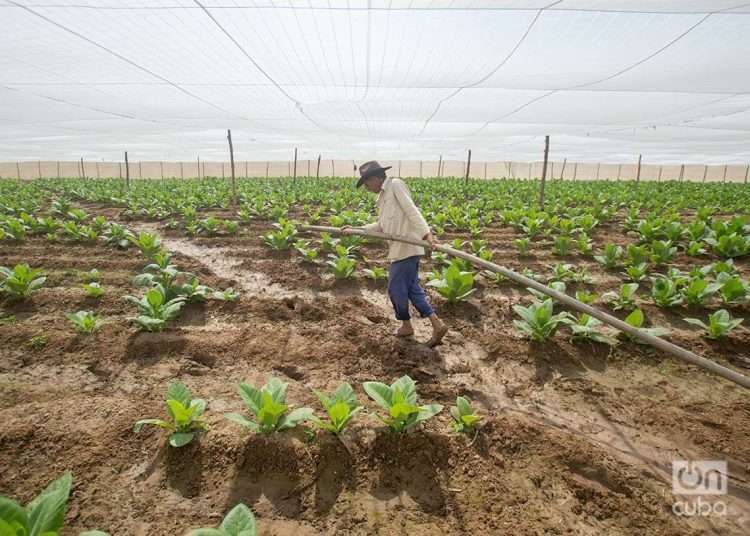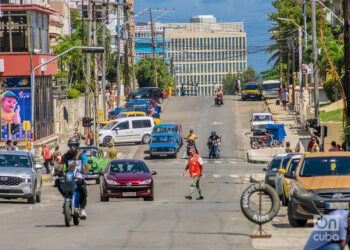At the end of September 2022, Hurricane Ian hit western Cuba with fury. The powerful cyclone hit the province of Pinar del Río, the island’s main tobacco producer, slowly hitting it with heavy rains and winds of over 200 kilometers per hour.
The devastation was enormous. More than 100,000 homes were affected by the phenomenon, most of the electrical and telephone networks went down, agriculture suffered significant losses and, within this, tobacco production was severely hit. In particular, significant damage was recorded in the municipalities of San Luis, San Juan y Martínez, and Pinar del Río, key in the harvest of the leaves for the manufacture of the famous Habanos.
Ian’s impact on the tobacco sector in Vueltabajo was such that, a few days after the hurricane, Granma described it as “devastating.” The figures revealed then drew a critical picture, particularly in infrastructure. Of the more than 12,000 natural curing houses in the province, around 90% were damaged, while in the collecting, destemming and warehouses the damage was “very severe,” according to the report.
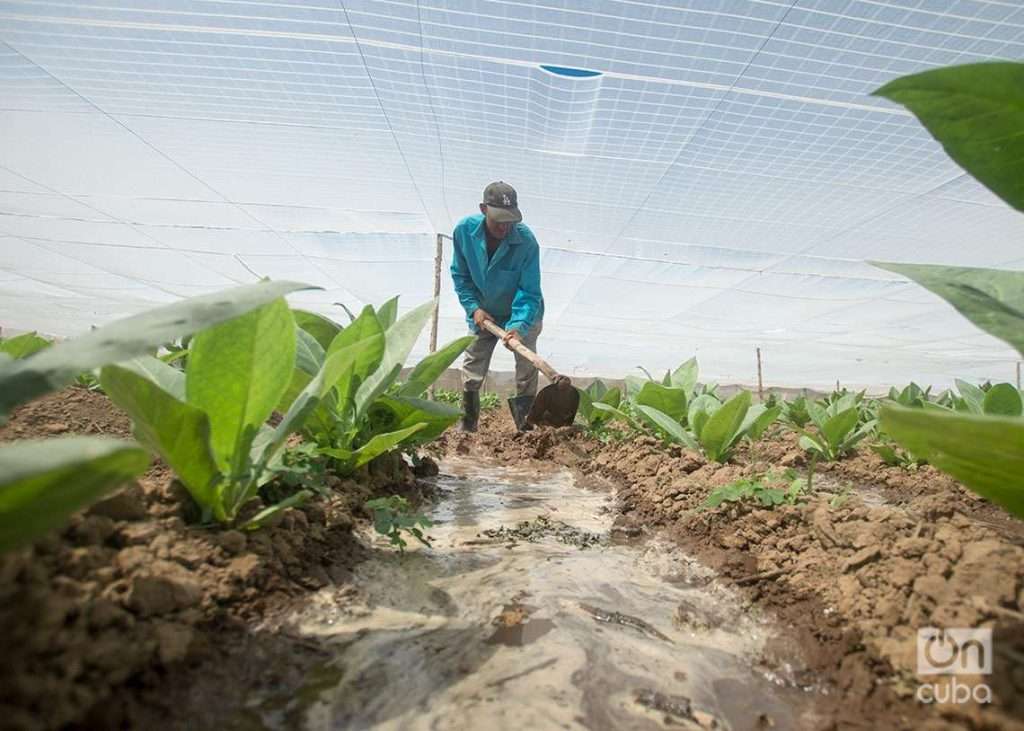
As if that were not enough, “part of the facilities that collapsed contained tobacco from the last harvests,” which “made it inevitable that around 11,000 tons would get wet,” said Víctor Fidel Hernández, Agriculture delegate in Pinar del Rio. The number would later be raised to about 15,000 of the more than 33,000 tons collected and protected before the cyclone hit the province, the bulk of the 41,000 in existence in Cuba.
Hernández considered what happened as “the biggest blow that the tobacco infrastructure has suffered throughout its history,” more than the damage caused by hurricanes Isidore and Lili, in 2002.
Less than six months later, the scenario looks different, at least in part of the terrain, and official projections point to optimism. An optimism, that is, moderated by the difficulties and the readjustments made to alleviate the consequences of Ian on tobacco production in Pinar del Río and, by extension, on the entire island.
Strategies and realities
The recovery work in Pinar del Río has been “commendable,” in the opinion of Luis Enrique Blanco, agricultural director of the state corporation Tabacuba, in charge of the island’s renowned sector. The government strategy to face the blow of the hurricane included the transfer to other provinces or less affected areas in Pinar del Río of thousands of tons of the collected leaf, for its rescue and processing.
In this way, of the more than 14,000 tons with problems in Vueltabajo, by mid-November some 10,000 had been recovered, according to what was revealed during a visit by President Díaz-Canel to the province. In the case of tobacco for export, only 50 tons were damaged; “minimal” damage, according to Blanco, who specified that only 15% of this raw material was lost due to the effects of the cyclone; the rest could be recovered for processing and use in the industry.

But the infrastructure situation is much less rosy. So far, some 2,400 curing houses have been recovered, of the nearly 10,000 that Ian damaged. It is, however, a “very meritorious” amount, says Blanco, “taking into account the current availability of resources and inputs that are required to achieve construction on time.”
In addition, another 1,700 houses are due to be completed in the coming weeks. Until December — with a view to the next harvest — they are expected to amount to 7,000, Tabacuba’s agricultural director told the press during a tour to Pinar del Río’s tobacco plantations as part of the 23rd Habano Festival, which ended this Friday.
To date, there have been some obstacles, especially in the availability of the wood necessary for the construction of the curing houses and other buildings, due to the lack of fuel for its transportation and problems with the technical state of the cutting equipment. This caused delays in the process. Until the end of February, only 62% of the planned wood could be transferred, according to Osvaldo Santana, coordinator of Tabacuba in Pinar del Río.
Even so, “the houses that have been built support what is planted to date,” said Blanco, who explained that the previewed planting plan “was readjusted” as a result of the damage. In this way, the 15,695 hectares initially planned throughout the island went down to around 9,500, while in Pinar del Río — a province responsible for around 70% of Cuba’s tobacco production — the more than 11,000 hectares planned were reduced to approximately 5,780.
However, with regard to covered tobacco, intended for making Habanos, the same did not happen. “The estimated planting plan was 2,100 hectares at the country level, at 1.4 tons per hectare. That plan stuck; it did not undergo readjustments,” explained Santana, who assured that, for the island, this type of tobacco is “the priority.” In Pinar del Río, the place par excellence for its cultivation, the planned hectares are 790. Because of this Santana considers that the production of wrapper leaves for the most famous premium cigars on the planet should not be affected.
A sui generis harvest
Together with the downward readjustments in the area to be planted, Tabacuba appealed to other productive licenses to reduce the negative impact of Ian. Due to necessity, the planting period in Pinar del Río was extended until March 20. In the rest of the island, it closed in February.
“We are at around 8,500 hectares planted in the country, that is, the readjusted plan is practically being fulfilled, which is a feasible area for current conditions,” commented Luis Enrique Blanco. He assured that, to reach this point, “there has been no rest” for the farmers and workers in the sector in recent months, while in terms of support and other factors the planting “has gone well.”
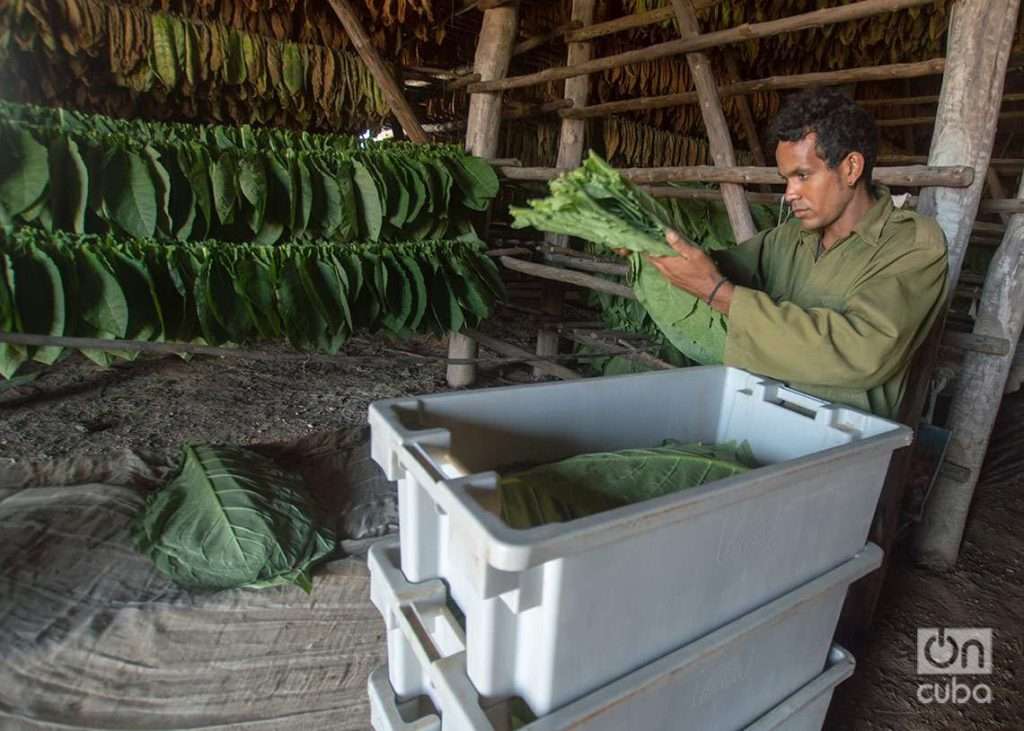
“Since the campaign was extended, it was possible for the resources to arrive on time,” he pointed out. Initially we have coverage for 100% of covered tobacco, as well as for the seedbed areas and first-class fine tobacco plantations, which is the raw material that contributes to premium tobacco for export. For the rest, since the planting was extended, it also arrived on time. There were no problems with fertilizer, which has always been a concern for growers, because it is impossible to obtain high yields and quality without these resources. And the rest of the inputs, including pesticides, also arrived and continue to arrive in the country.”
This represents a change from the previous harvest, in which the lack of fertilizers and other inputs, as well as logistical problems, caused a reduction in the area to be planted by around 20% of what was initially planned. Regarding the production plan, it was reduced from 27,000 to 22,000 tons. In previous years, the harvest had already been falling, from more than 30,000 tons in 2017 to less than 22,000 in 2021, according to data from the National Office of Statistics and Information (ONEI).
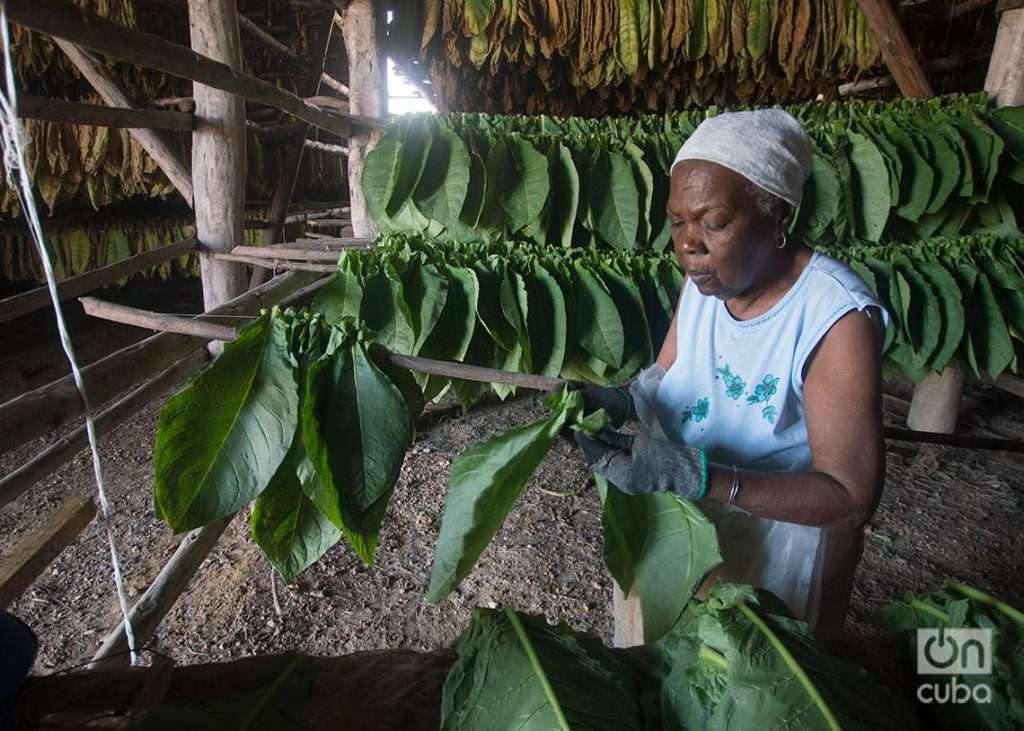
But this year not only does it seem there has been better coverage of inputs, at least for the reduced land to be planted. In addition, according to Blanco, the weather and pests have lent a hand to tobacco farming in Vueltabajo.
“After the hurricane, the weather has been favorable and that has given us the possibility of extending the sowing until March. The days are pretty good for tobacco, with favorable temperature and humidity conditions,” he considered. “As for pests, the year has been quite favorable. The few outbreaks that have come out have been limited to the lower third of the plant, in leaves that can be discarded and that do not affect the yield in exportable layer.”
In the furrow
Reynel Rojas agrees with the assessments of the agricultural director of Tabacuba. Rojas is heir to his family’s tobacco tradition and has accumulated a decade of work in the field, particularly in the production of covered tobacco for export. The young producer, who has his farm on the La Coloma highway (where the center of the hurricane entered the province) praises that there has been “fairly good weather” this year and the impact of pests such as mold blue is low.
In the current harvest, Rojas has 13 hectares planted. For each one, he expects a yield of 1.3 tons, with his own efforts and that of his almost one hundred workers. But in order to get to this point, he assures that he had to do in three months what he had previously achieved in ten years, in addition to receiving “unconditional” support from the State to acquire the necessary resources and rebuild the infrastructure damaged by Ian.
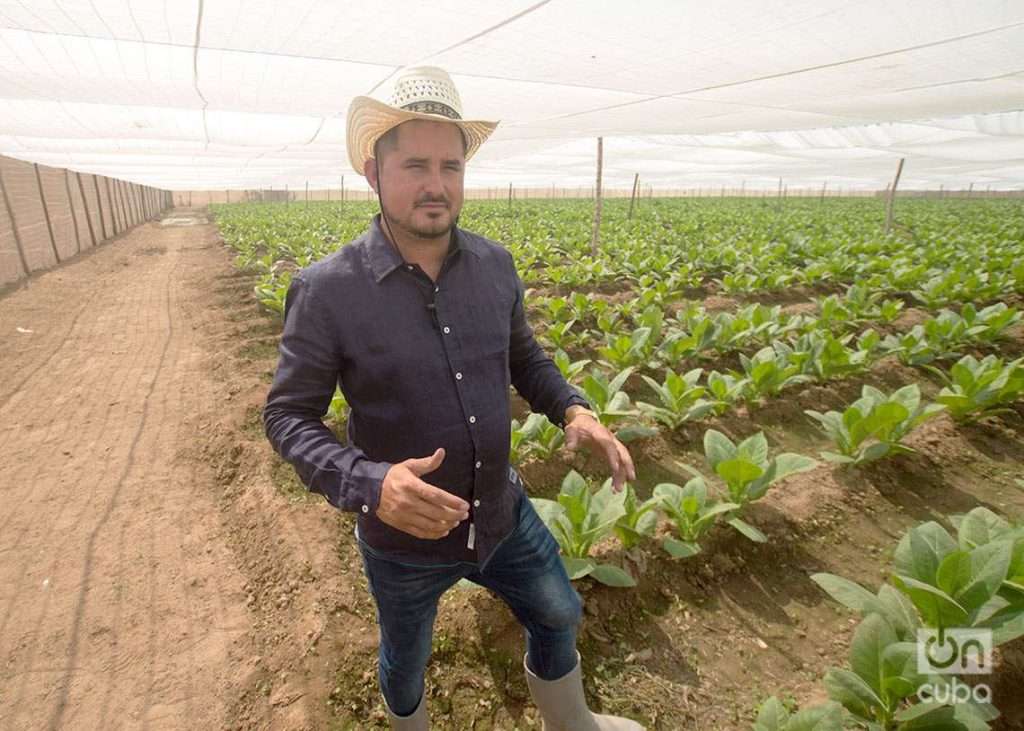
Not all producers have suffered the same fate. A recent dispatch by AFP, prior to the Habano Festival, collected the testimony of farmers with different experiences five months after the hurricane. While some, like Reynel Rojas, had been able to start the harvest and managed to replace at least part of the damaged infrastructure, others had not been able to plant tobacco again or recover from the losses. In something, however, they agreed, according to the French news agency: it will take “between eight and ten years” for tobacco agriculture in Pinar del Río to return to “its usual state” and that they hope not to have to relive in the short term the nightmare of another hurricane.
Regarding production for 2023, even with downward estimates due to the ordeal experienced, neither Tabacuba nor Habanos S.A. anticipate significant changes.
“With the tobacco that we have in reserve, in storage, plus the one obtained in this harvest, we can support the industry’s commitments both for exports and for the different assortments for the national market, including the cigars and cigarettes for the population,” confirmed Luis Enrique Blanco. For their part, leaders of the Spanish-Cuban joint venture in charge of the international sale of Habanos commented during the festival that they do not estimate that in 2023 the raw material obtained from the furrow will be affected.
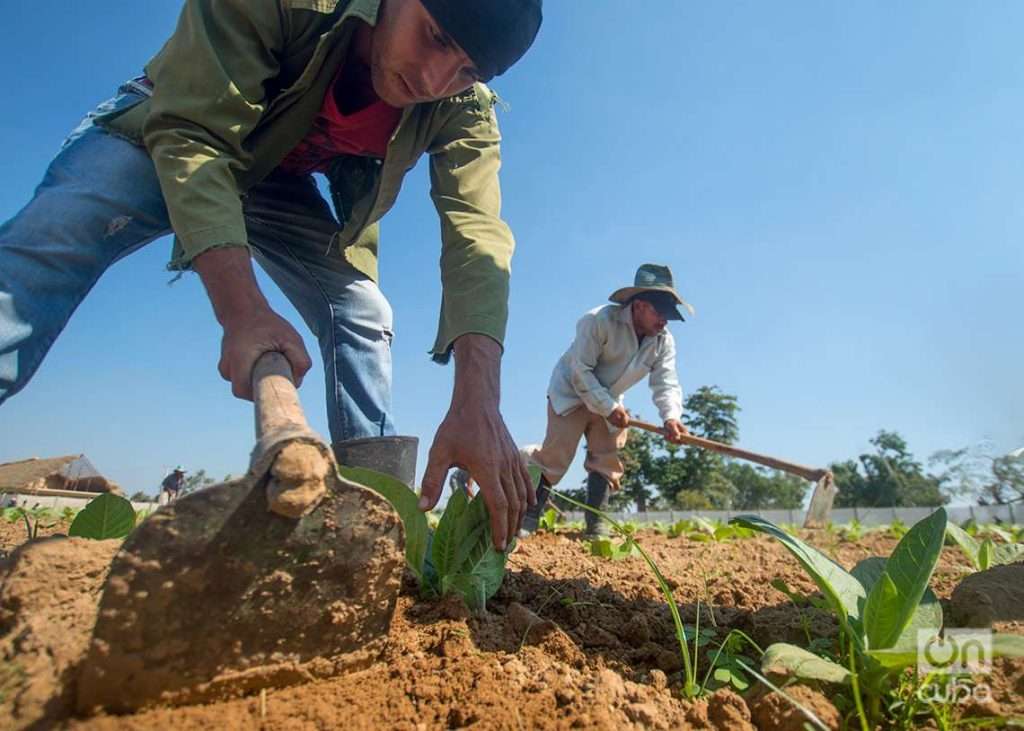
Even so, in statements to the EFE news agency, Jorge Pérez Martel, the company’s commercial vice president, made it clear that, if necessary, the quality that gives Cuban cigars prestige would be favored over the volume of the harvest.
“We prefer, if necessary, to reduce quantities to maintain quality,” said Pérez Martel, in charge of a company that last year had a turnover of 545 million dollars, a 2% annual increase at constant exchange rates, although a decrease of gross profits compared to 2021 when 568 million were registered.
To find out what will finally happen with the production and sales of Cuban cigars this year, it will be necessary to wait a few months. Meanwhile, fate is decided day by day in the fields, in the lands of Vueltabajo and the other tobacco-growing areas of Cuba, where the farmers try to leave behind Ian’s losses and traumas and defy the rest of the daily difficulties.

